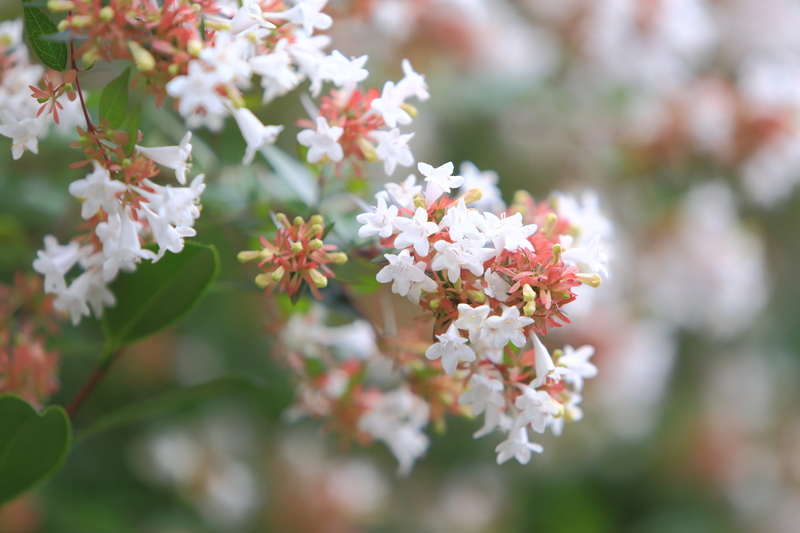3 Pro Tips for Tackling Stubborn Weeds in Your Garden
Posted on 05/06/2025
3 Pro Tips for Tackling Stubborn Weeds in Your Garden
Unwanted weeds are every gardener's nemesis, threatening the vitality of your favorite plants, stealing nutrients, and marring the beauty of a well-managed garden. While occasional weeding is part of every green thumb's routine, stubborn weeds often demand more than mere pulling to be kept in check. If you've struggled with resilient intruders like dandelions, crabgrass, or creeping Charlie, you're not alone. Many gardeners seek effective strategies for weed control that are safe, sustainable, and suitable for any garden size.
In this comprehensive article, we'll reveal three expert weed control tips that go beyond basic hand weeding. You'll discover tactical approaches that integrate prevention, physical removal, and advanced methods--leaving you with a flourishing, weed-free landscape.
Contents
- Understanding Weed Behavior
- Pro Tip 1: Smothering Persistent Weeds
- Pro Tip 2: Mastering the Art of Hand Pulling
- Pro Tip 3: Safe Natural and Selective Chemical Controls
- Bonus: Long-Term Weed Prevention Strategies
- Conclusion
Understanding Weed Behavior: Why Are Some Weeds So Stubborn?
Before you launch your weed control campaign, it's useful to get to know your enemy. Stubborn weeds, such as dandelion, bindweed, and quackgrass, exhibit aggressive behaviors that give them an edge over your planned plantings:
- Deep or spreading roots--enable rapid regrowth even after you've pulled the visible part.
- Seed persistence--many varieties spread thousands of seeds with built-in dormancy protection that can persist in soil for years.
- Adaptability--weeds often thrive in poor conditions, outcompeting weak garden plants.
- Rapid growth cycles--many can sprout and set seed within weeks, making missed weeding quickly result in more problems.
Knowing how and why weeds are persistent helps you deploy the most effective methods for eradication without damaging your beloved perennials, vegetables, or lawn.
Pro Tip 1: Smothering Persistent Weeds with Mulch and Barriers
Why Smothering Works
Weeds need light to thrive. By denying weed seeds the sunshine they crave, you can suppress unwanted growth and give your garden plants the advantage. Mulching and using landscape fabrics are classic yet highly effective methods for stubborn weed control, particularly in garden beds and paths.
Best Mulch Materials for Weed Suppression
- Wood chips and bark--great for ornamental beds, pathways, and around trees.
- Straw--use in vegetable gardens; avoid hay which may contain more weed seeds.
- Compost or leaf mold--adds nutrients while creating a dense cover.
- Pine needles--perfect for acid-loving plants, also deters slugs.
How to Smother Weeds Properly
- Remove existing weeds by cutting or pulling as close to ground level as possible.
- Lay a thick layer of mulch (2-4 inches) on the soil surface, ensuring full coverage over bare earth.
- For extra resilience against stubborn perennial weeds, layer newspaper or cardboard underneath your organic mulch. This biodegradable barrier suffocates shoots but allows water to pass through.
- Be careful not to pile mulch directly against plant stems, which could cause rot.
Smothering works especially well in spring and fall and can be reapplied as necessary. It also improves soil moisture retention and enhances soil fertility over time.
Pro Tip 2: Master the Art of Hand Pulling to Defeat Stubborn Weeds
Targeted Removal is Essential
No matter how diligent you are, some weeds will sneak through mulch or barriers. This is where hand pulling remains indispensable--but only if done effectively. Many gardeners unwittingly snap off the tops, leaving roots to regrow stronger than before. Proper technique maximizes your efforts and truly eradicates persistent weeds.
Best Practices for Hand Pulling Stubborn Garden Weeds
- Weed after rain or watering--moist soil allows roots to slip free instead of snapping.
- Use a weeding tool or hand fork to get deep beneath taproots (essential for dandelions, dock, etc.).
- Grab low on the stem and pull gently but firmly and steadily--avoid jerky motions that break roots.
- If roots break, dig out the remainder to prevent regrowth.
- Dispose of pulled weeds--don't compost mature seed heads or aggressive root fragments.
Timing is Everything
Tackle weeds before they flower or go to seed for best results. Frequent, consistent weeding sessions are better than letting weeds escalate. Consider a quick walk-through twice a week to spot and remove new arrivals before they mature.
Pro Tip 3: Safe Natural and Selective Chemical Controls
Choosing the Right Tools for the Job
While prevention and manual removal handle most garden weeds, especially tough weed infestations or invasive perennial weeds may require additional measures. Selective and spot treatments can be used to keep your garden healthy and beautiful without widespread chemical use.
Natural and Organic Solutions
- Boiling water--effective on cracks in patios, walkways, and driveways. Pour boiling water directly onto weed crowns for instant damage.
- Vinegar sprays--acetic acid burns foliage and can help with annual weeds. Use on a sunny day for maximum effect. Caution: vinegar harms any plant it touches!
- Homemade herbicidal soap--mix liquid soap with horticultural vinegar. Spray on a dry day.
- Corn gluten meal--applied to lawns and beds in early spring, it prevents seed germination (but is not effective on established weeds).
Spot-Treating with Selective Herbicides
If natural solutions fall short against extremely stubborn weeds like invasive ground ivy or bindweed, spot-treating with selective herbicides may be warranted. Always follow these guidelines:
- Apply only to the weed (use a brush for precision if needed).
- Choose the right product--lawn-safe herbicides for grassy areas, and non-residual products for garden beds.
- Avoid spraying before rain and protect nearby plants.
- Always wear gloves and protective eyewear.
Never use broad-spectrum "total vegetation killers" in areas with desired plants. Focus instead on methods that minimize impact on your garden's ecosystem.
Bonus: Long-Term Strategies for Keeping Your Garden Weed-Free
Prevention is Better Than Cure
Stopping weeds before they start is the gold standard in sustainable gardening. These bonus tips will help reduce future weed invasions and maintain your hard-earned weed-free status.
- Keep soil covered
Bare earth invites weed seeds to thrive. Use groundcovers, dense plantings, or mulch to keep soil shaded. - Improve soil health
Vigorous plants outcompete weeds. Regularly amend your soil with compost to boost fertility and structure. - Water wisely
Apply water at the base of desired plants using drip irrigation or soaker hoses. Avoid broad overhead watering that encourages weeds across open spaces. - Edge and maintain borders
Use sharp edging tools to keep lawn grass from invading garden beds and vice versa. - Monitor compost and plant additions
Only add well-rotted compost to your garden, and inspect new plants (especially from friends or nurseries) for hitchhiking weeds. - Practice crop rotation and cover cropping
In vegetable gardens, rotate crops and plant off-season cover crops to break pest and weed life cycles.
With a solid weed prevention plan, you'll reduce the amount of time spent battling weeds and enjoy more of the beauty and productivity your garden was meant to provide.
Conclusion: Say Goodbye to Stubborn Weeds with These Pro Garden Tactics
With these three expert weed control strategies--smothering, skilled hand-pulling, and targeted natural or selective chemical treatments--you'll be equipped to tackle even the most persistent weed problems in your garden. Combine these tips with sound prevention habits, and you'll save time and effort while giving your flowers, vegetables, and shrubs the best shot at thriving.
Don't let weeds steal your garden's nutrients, space, and beauty. Employ these proven weed management techniques and enjoy a lush, vibrant, weed-free landscape all season long. For more gardening insights, be sure to bookmark this guide and revisit whenever stubborn weeds threaten your garden oasis. Happy gardening!
Frequently Asked Questions about Tackling Stubborn Weeds in the Garden
- What is the best way to permanently remove deep-rooted weeds?
A combination of hand digging (removing as much of the root as possible) and preventing regrowth with mulch works best for deep-rooted perennial weeds. - Are natural weed killers effective?
Natural weed killers like vinegar or boiling water work against young or annual weeds, but may require repeated applications for tough perennials. - Does mulching stop weeds completely?
Mulching significantly reduces weed growth, especially when used alongside a barrier like cardboard, but some tenacious weeds may still break through. Regular maintenance is key.
For more specific advice, consult your local extension office or gardening center, as some stubborn weeds may require targeted approaches depending on your region and soil type.



